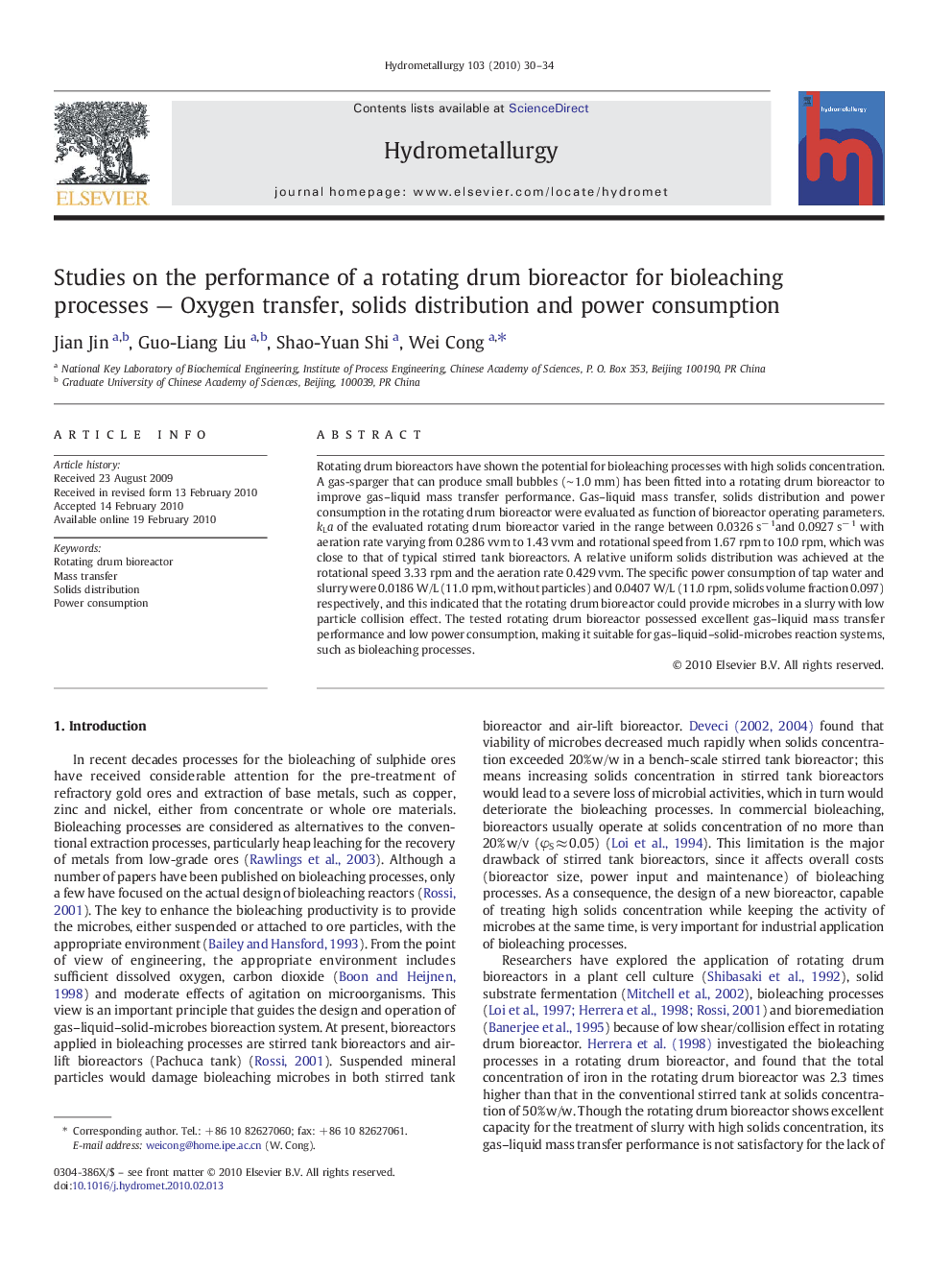| Article ID | Journal | Published Year | Pages | File Type |
|---|---|---|---|---|
| 212784 | Hydrometallurgy | 2010 | 5 Pages |
Rotating drum bioreactors have shown the potential for bioleaching processes with high solids concentration. A gas-sparger that can produce small bubbles (∼ 1.0 mm) has been fitted into a rotating drum bioreactor to improve gas–liquid mass transfer performance. Gas–liquid mass transfer, solids distribution and power consumption in the rotating drum bioreactor were evaluated as function of bioreactor operating parameters. kLa of the evaluated rotating drum bioreactor varied in the range between 0.0326 s− 1and 0.0927 s− 1 with aeration rate varying from 0.286 vvm to 1.43 vvm and rotational speed from 1.67 rpm to 10.0 rpm, which was close to that of typical stirred tank bioreactors. A relative uniform solids distribution was achieved at the rotational speed 3.33 rpm and the aeration rate 0.429 vvm. The specific power consumption of tap water and slurry were 0.0186 W/L (11.0 rpm, without particles) and 0.0407 W/L (11.0 rpm, solids volume fraction 0.097) respectively, and this indicated that the rotating drum bioreactor could provide microbes in a slurry with low particle collision effect. The tested rotating drum bioreactor possessed excellent gas–liquid mass transfer performance and low power consumption, making it suitable for gas–liquid–solid-microbes reaction systems, such as bioleaching processes.
